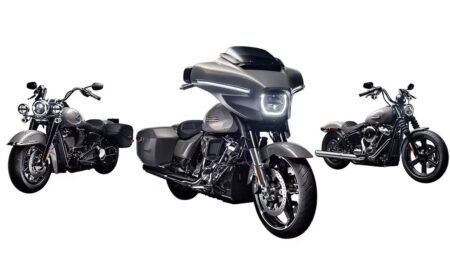Analyze How Market Dynamics Affect Motorcycle Pricing and Sales
The Shifting Gears of the Motorcycle Market: An In-Depth Analysis
The motorcycle industry, a realm where mechanical artistry meets personal freedom, is undergoing a profound evolution. More than just a mode of transport, motorcycles represent a lifestyle, and this very essence is being reshaped by a confluence of economic, technological, and societal forces.
A Tapestry of Trends:
- The Electric Revolution: A Silent Surge:
- The transition to electric motorcycles is not merely a trend; it’s a paradigm shift. Unlike the often-gradual adoption of electric cars, electric motorcycles offer a more immediate and tangible benefit: exhilarating acceleration. This, coupled with the growing network of charging infrastructures, is making them increasingly attractive.
- Furthermore, manufacturers are focusing on unique electric motorcycle designs, with some companies focusing on urban mobility, and others on high performance models. This diversification is key to the markets growth.
- Adventure’s Call: The Rise of the Explorer:
- The human desire for exploration is driving the surge in adventure and dual-sport motorcycles. This segment caters to riders seeking to break free from urban confines, exploring diverse terrains.
- This trend is fueled by social media, where riders share their adventures, inspiring others to embark on their own journeys. This has created a strong community, that helps drive sales.
- The Digital Rider: Technology’s Integration:
- Modern motorcycles are becoming increasingly sophisticated, with advanced rider-assistance systems, high-resolution displays, and seamless smartphone integration. This technological infusion is enhancing safety and the overall riding experience.
- The data that is being collected from these systems, is also becoming a valuable asset for the companies, that can be used to improve future models.
- Personalization and the Niche Market:
- The desire for individuality is driving the growth of customization and niche markets. From classic restorations to bespoke builds, riders are seeking to express their unique style.
- This has also led to a growth in smaller, specialized companies, that cater to these niche markets.
- The Pre-owned Market’s Ascendancy:
- The rise of online marketplaces and the growing appeal of sustainable consumption are boosting the pre-owned motorcycle market. This market offers affordability and access to classic models, attracting a wide range of riders.
The Dynamics of Price and Sales:
- Economic Tides:
- Economic fluctuations significantly impact motorcycle sales, particularly for high-end models. During economic downturns, consumers tend to prioritize essential spending, leading to a decline in discretionary purchases.
- Conversely, periods of economic growth and increased disposable income can fuel a surge in motorcycle sales.
- Regulatory Landscapes:
- Emission regulations and safety standards play a crucial role in shaping the motorcycle market. Stricter regulations can increase production costs, which are often passed on to consumers.
- Governments also use incentives, to promote the sales of electric motorcycles, therefore greatly effecting those markets.
- Technological Disruption:
- Technological advancements, particularly in electric powertrains and rider-assistance systems, are transforming the industry. These innovations can lead to higher prices for advanced models but also create new market segments.
- Consumer Sentiments:
- Shifting consumer preferences and lifestyles significantly impact motorcycle sales. The growing interest in sustainability, adventure, and personalized experiences is driving demand for specific motorcycle types.
- Global Supply Chain Vulnerabilities:
- Global supply chain disruptions, such as those caused by geopolitical events or pandemics, can lead to shortages of parts and components, resulting in increased prices and delayed deliveries.
Regional Nuances:
- Asia-Pacific: The Engine of Growth:
- The Asia-Pacific region is a major driver of the global motorcycle market, driven by rapid urbanization and increasing disposable incomes.
- In many countries, motorcycles are essential for daily commuting, driving demand for affordable and fuel-efficient models.
- North America and Europe: The Pursuit of Leisure:
- In North America and Europe, motorcycles are often viewed as recreational vehicles, leading to a higher demand for performance, luxury, and adventure models.
- Emerging Markets:
- Emerging markets are proving to be very valuable to motorcycle companies, with the growth of middle classes, and the need for personal transport.
The motorcycle market is a complex and evolving landscape, shaped by a multitude of factors. To navigate this dynamic environment, stakeholders must remain agile and adaptable, embracing technological advancements, understanding consumer preferences, and responding to economic and regulatory changes.

The Art of the Deal: Valuation and Negotiation Tactics in the Motorcycle Market
Navigating the intricacies of motorcycle transactions, whether buying or selling, requires a blend of analytical prowess and strategic negotiation. Understanding the true value of a motorcycle and mastering the art of negotiation can significantly impact the outcome of any deal. This article delves into techniques for accurate valuation and effective negotiation, empowering you to secure the best possible outcome.
I. Unveiling the Motorcycle’s True Value: Valuation Techniques
Determining the “right” price is paramount. It’s a delicate balance between maximizing value and ensuring a fair transaction. Here’s a breakdown of effective valuation techniques:
- Comparative Market Analysis (CMA):
- This technique involves analyzing recent sales of similar motorcycles in your area. Online marketplaces, classified ads, and dealer websites are invaluable resources.
- Key factors to consider:
- Make and Model: Identical or closely comparable models.
- Year and Mileage: Reflecting the motorcycle’s age and usage.
- Condition: Assessing cosmetic and mechanical condition.
- Modifications and Upgrades: Recognizing the value of aftermarket additions.
- Location: Regional variations in pricing.
- Condition Assessment:
- A thorough inspection is crucial. Consider:
- Mechanical Condition: Engine, transmission, suspension, brakes, and electrical systems.
- Cosmetic Condition: Scratches, dents, rust, and overall appearance.
- Maintenance Records: Documenting service history and repairs.
- Tire Condition: Indicating wear and age.
- A pre-purchase inspection by a qualified mechanic is highly recommended, especially for used motorcycles.
- A thorough inspection is crucial. Consider:
- Depreciation Analysis:
- Motorcycles, like other vehicles, depreciate over time. Factors influencing depreciation include:
- Age: Newer models generally command higher prices.
- Mileage: Higher mileage typically reduces value.
- Brand and Model: Some brands and models retain value better than others.
- Market Demand: Popular models may depreciate less.
- Utilizing online depreciation calculators or consulting industry resources can provide valuable insights.
- Motorcycles, like other vehicles, depreciate over time. Factors influencing depreciation include:
- Special Features and Modifications:
- Aftermarket modifications can add or detract from a motorcycle’s value, Consider:
- Quality of Modifications: Professionally installed upgrades are more valuable.
- Relevance to Market: Modifications that enhance performance or aesthetics are more appealing.
- Originality: Some buyers prefer stock motorcycles.
- Aftermarket modifications can add or detract from a motorcycle’s value, Consider:
- Online Valuation Tools:
- Many websites and apps offer motorcycle valuation tools. However, these tools should be used as a starting point and not as the sole determinant of value. Use them in conjunction with other valuation methods.
II. Mastering the Art of Negotiation: Tactics for Success
Negotiation is a delicate dance, requiring tact, strategy, and a clear understanding of your objectives.
- Preparation is Key:
- Research the motorcycle’s value thoroughly.
- Establish your walk-away price.
- Anticipate the other party’s arguments.
- Gather all necessary documentation.
- Establish Rapport:
- Create a positive and respectful atmosphere.
- Listen attentively to the other party’s concerns.
- Build trust and rapport.
- Anchoring:
- The first offer can significantly influence the negotiation. If selling, consider setting a slightly higher initial price. If buying, start with a reasonable but lower offer.
- The Power of Silence:
- Sometimes, silence can be a powerful negotiation tactic. Allow the other party to fill the void, potentially revealing valuable information.
- Highlight Value:
- Emphasize the motorcycle’s strengths and unique features.
- Provide evidence to support your valuation.
- If buying, point out any flaws, but do so respectfully.
- Concessions and Trade-offs:
- Be prepared to make concessions, but ensure they align with your objectives.
- Explore trade-offs, such as including accessories or offering a warranty.
- The “Walk-Away” Point:
- Know your limits and be prepared to walk away if the deal is not favorable.
- A willingness to walk away strengthens your negotiating position.
- Document Everything:
- Ensure all agreements are documented in writing to avoid misunderstandings.
- Emotional Intelligence:
- Keep emotions in check. Do not let the emotions of the transaction cause you to make a bad deal.
- Utilize the power of third party inspections.
- Having a third party mechanic look at the bike, can help you with negotiations.
Successful motorcycle transactions hinge on accurate valuation and effective negotiation. By employing the techniques outlined in this article, you can navigate the market with confidence, secure fair deals, and ultimately, ride away with a satisfying outcome.






Leave a Reply